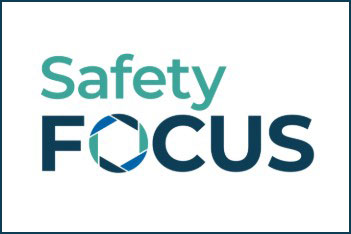
Carol Fredrickson knows only too well that her phone will start ringing when a tragic workplace shooting takes place. It is a pattern she has seen repeated many times, the latest example being the Aug. 26, 2015, on-air shooting of two television journalists by a disgruntled former station employee. Fredrickson, CEO of Violence Free, a global violence prevention consulting firm, and a 15-year law enforcement veteran, believes the shock of these incidents often shakes people from a state of denial about workplace violence.
“I think people in general are in denial that it could happen to them or at their workplace,” she says. “In our minds, the two places that we are the safest is in our homes and our work, so we just believe that this could not happen, that no one we work with could possibly do this. We may ignore some of the warning signs because we think, ‘It happens someplace else, not here.’”
Seeing & Reporting the Signs
According to Fredrickson, it often takes an accumulation of events for people to report anything to management. By then, it may be too late. “What I usually find is that employees may see a sign on its own, something that they may view as inappropriate behavior, but on its own it is not a significant issue,” she explains. “Individually these incidents may seem unimportant, but collectively they may paint a picture of something much more serious.”
Personal problems such as financial pressures, health concerns, family turmoil and even mental illness often spark the downward spin toward violence. Some of the more telling signs include decreased productivity, a change in work habits, excessive tardiness and frequently missed due dates.
Changes in personality may also signal pending trouble. “Someone who may have been very engaging and fun to be with suddenly becomes quiet and withdrawn and uncooperative or defensive,” Fredrickson says. “They may become a loner and verbally abusive, or they may display unjustified anger.” Often, however, people chalk these issues up to someone having a bad day or a bad week, which only pushes the boundaries of aggressive behavior further, sometimes to the point where the potentially violent person “holds all the power and controls the office.”
Another warning sign is someone who obsesses about a topic and talks about it all the time. “One individual called me about his boss who was talking almost weekly about some of the mass school shootings,” Fredrickson says. “When he said anything to [this boss] about this, the boss would respond, ‘Well you have kids don’t you? I would hate it if something like that happened to them.’”
Unfortunately, Fredrickson reports that these signs are often too easily dismissed. She says employers must do a better job of connecting the dots. “If an employee reported this behavior and if someone in human resources or safety got that report and they started to watch for more signs that there is an issue, then the company can intercede early.”
That is why a clear reporting policy is critical. “Every place of employment, no matter the size, needs to have a workplace violence policy that is easily understood and has clear reporting policies,” she says. To illustrate this point, Fredrickson shares the story of a small business owner who terminated a long-term employee.
“The owner had cause to terminate this employee,” Fredrickson says, “but he went home and got drunk and started calling some of his buddies and imploring them not to show up for work the next day.” The client received calls from three of the five employees he had called. “If they did not have access to her phone number or didn’t know her after-hours number, who knows what may have happened,” Fredrickson says. In larger organizations, employees often do not know who to call at night, she says.
Not knowing whom to call is only one piece of the equation, however. Fear also plays a role, Fredrickson explains. First, employees may fear retaliation directly from the angry coworker and do not want take the brunt of any further frustration. Second, no one wants to be perceived as the office snitch. “Parents, coaches and teachers have all told us not to snitch on each other,” she says. As a result of this socialization, people may not act on their better judgment. “A common reaction in this situation is ‘Well, I should report this potentially violent person, but I’m worried that it might make me look petty or judgmental or like a goody-goody.’”
Supervisory reaction is another concern, she says. “People have told me they are afraid to report a potential incident because they think their supervisor will either overreact or view them as unable to handle the job. So they just keep quiet.”
Taking Proactive Steps
To begin to better address workplace violence, Fredrickson recommends that employers take three steps: 1) create a threat assessment (or crisis) team; 2) conduct a gap analysis to identify vulnerabilities; and 3) train all employees. The threat assessment team should include representatives from several groups. This can include human resources, security, facility management, risk management, workers’ union, operations, communications/public relations and in-house legal counsel, with the final makeup based on company size and structure.
Fredrickson recommends that the team meet at least once a year to conduct a vulnerability assessment, adding that most teams also meet when a threat of workplace violence arises or when the company has a high-risk termination. After such events, the group should hold a debrief to assess the company’s response. The team’s vulnerability analysis will typically reveal several concerns, Fredrickson says, likely including some common gaps that her clients have identified. “Do employees who drive company vehicles know how to handle a road rage incident?
Have employees who travel either in the U.S. or abroad received special training? What if the organization is in an inner-city location? What procedures are in place for dealing with a high-risk termination?”
Employee training is also critical. “We have to train everyone on what they are expected to do,” Fredrickson advises. “The procedures about when to call, who to call and related steps must be very clear.” It is also important that employees understand how issues such as domestic violence play out in the workplace. Fredrickson says coworkers often think they are doing someone a favor by not reporting strange behavior, but in reality they do not understand the depth of the issue or the risks involved.
Given the prevailing “it can’t happen here” mentality, who should take the lead in focusing much-needed attention on workplace violence? Fredrickson notes that while it will vary from one organization to another, this responsibility typically falls to human resources and safety/security personnel. What is also needed, Fredrickson believes, is a concerted effort to get the right information to C-level executives. “I think middle management almost cushions the information thinking they can take care of it and it never makes it up to the C-suite,” she says. “We really need a shift in the mind-set that workplace violence cannot be ignored, and this starts at the top.”
In her experience working with companies of all sizes, Fredrickson reports that it usually comes down to money. “Most C-level executives will not buy into it until there is a problem, until they see the dollars going out the door, either for investigation, legal fees or similar. That’s when they jump in and ask, ‘Why wasn’t this done before? Why wasn’t this brought to my attention?’” That is why any program developed must include 60 to 90 minutes of dedicated training for these executives. “This leads to a much better result throughout the organization,” Fredrickson says.
On February 11, 2016, as party of ASSE’s weeklong SeminarFest in Las Vegas, NV, Fredrickson will deliver a 1-day seminar on Workplace Violence Preparation. She promises to provide attendees with a toolbox of resources and strategies that they can use and teach other to deescalate conflict. “It is really about helping people identify behaviors that can be predictive of violence and developing tools to deescalate the situation,” Fredrickson says. Through role-playing and discussion, attendees will also learn how to reframe situations, remove personal judgment and stay neutral.
The early registration deadline for SeminarFest is coming up fast on January 3, 2016. Register today for early bird discounts.
Related Links
This Digital Tool Can Improve Your Safety Management
How to Break Down Silos and Improve Safety
10 Things You Wish Everyone Understood About Safety



